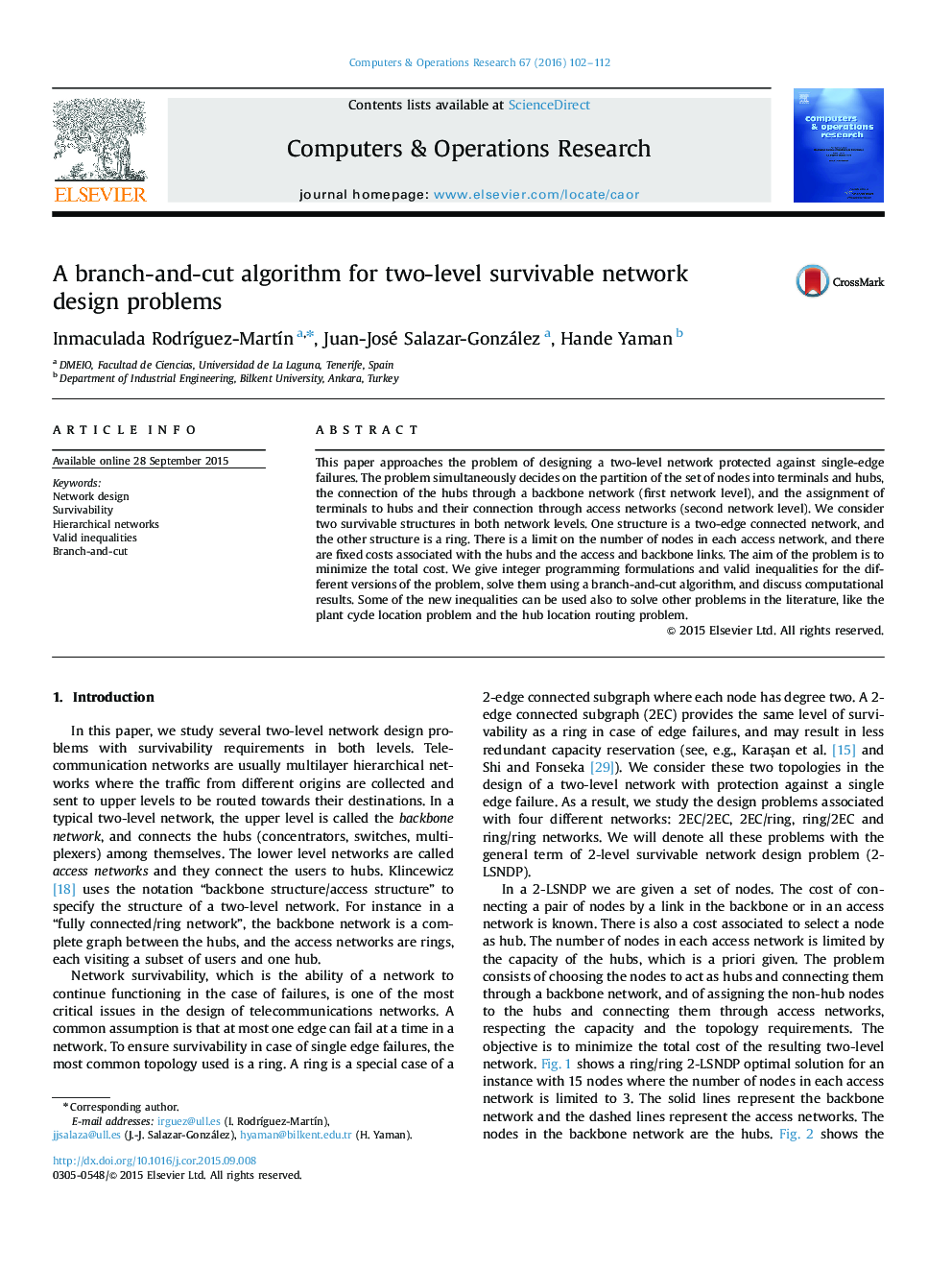| Article ID | Journal | Published Year | Pages | File Type |
|---|---|---|---|---|
| 475634 | Computers & Operations Research | 2016 | 11 Pages |
•We study two-level survivable network design problems.•Two types of survivable structures are considered: rings and 2-edge connected graphs.•We give an ILP formulation that models the different problem' variants.•We derive strong valid inequalities and devise separation procedures for them.•Some of the valid inequalities generalize other inequalities in the literature.•The proposed branch-and-cut method succeeds in solving instances with up to 40 nodes.
This paper approaches the problem of designing a two-level network protected against single-edge failures. The problem simultaneously decides on the partition of the set of nodes into terminals and hubs, the connection of the hubs through a backbone network (first network level), and the assignment of terminals to hubs and their connection through access networks (second network level). We consider two survivable structures in both network levels. One structure is a two-edge connected network, and the other structure is a ring. There is a limit on the number of nodes in each access network, and there are fixed costs associated with the hubs and the access and backbone links. The aim of the problem is to minimize the total cost. We give integer programming formulations and valid inequalities for the different versions of the problem, solve them using a branch-and-cut algorithm, and discuss computational results. Some of the new inequalities can be used also to solve other problems in the literature, like the plant cycle location problem and the hub location routing problem.
